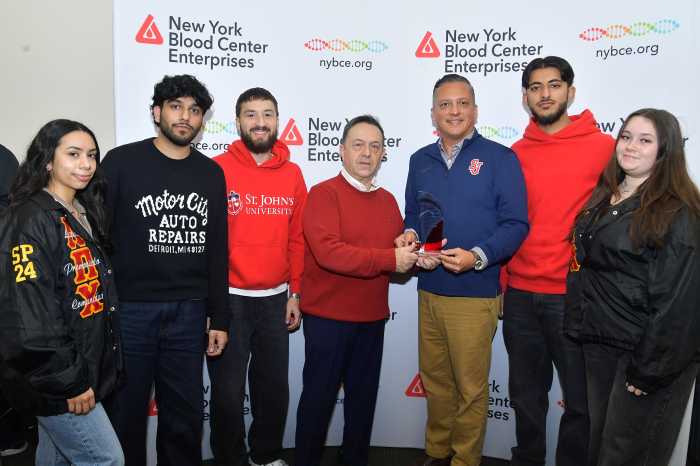A landscape approach to the redesign of Jamaica Center took first place at the New York Institute of Technology’s (NYIT) annual Community Design Review in which fourth-year students of the School of Architecture and Design presented their creative plans before planning and architectural professionals and community representatives on December 12.
The plans resulted from the students’ previous meeting with The Greater Jamaica Development Corporation and Community Board representatives to review goals and objectives for the Jamaica Center area. The focus area of the study was a neighborhood of several blocks around the Long Island Rail Road hub including the underutilized blocks to the south of the new Air Train terminal.
“Collective Unconscious” by Eugene Miroshnichenko, Scott Brandi and Nasiq Khan set itself apart by using green space as the means to unite Jamaica’s congested, commercial district to the north of the railroad tracks with the marginal area to the south, said John di Domenico, a professor of architecture at NYIT. The winning team’s soft approach to linking the disparate Jamaica communities varied greatly from the other submissions, which typically used buildings to unite the two areas, he said.
The winning design team arrived at its approach - that public space is a viable means to rejuvenate a community - after learning from local residents and York College professors that the community longed for green space. By extending King’s Park into the south, the team created both a communal space between all the neighborhoods and a conduit for economic growth along the perimeter. The design also incorporated community gardens and agricultural plots for use by local residents as well as community centers and athletic facilities.
Critiqued and ultimately recognized as the winning project by a diverse group of judges including: Rick Bell, executive director of The American Institute of Architects, New York Chapter; Lisa Iulo, professor of architecture at Penn State University, Philip HX Giang, urban designer at Cooper, Robertson & Partners; and Peter Engelbrecht, director of planning for Greater Jamaica Development Corporation, the design allows for different areas to adopt multiple functions and can evolve to meet the needs of the changing Jamaica community, the team said.
Each year NYIT works with a community on a design project that is timely and important to that neighborhood. In recent years, students have prepared urban design studies for Long Island City, The Nassau Hub and Lower Manhattan’s World Trade Center Site.



































